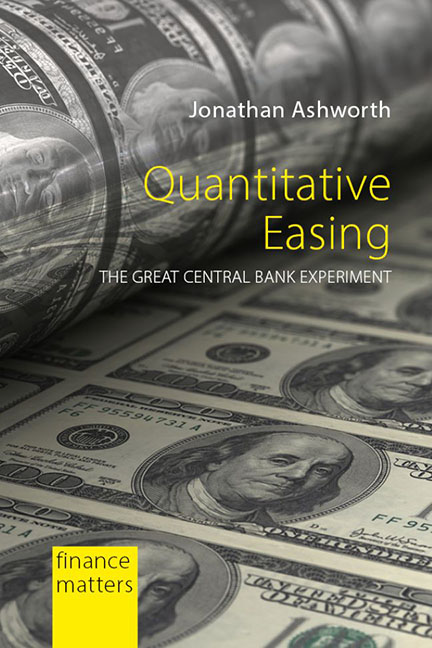Book contents
- Frontmatter
- Contents
- Preface and acknowledgements
- Abbreviations
- Foreword
- 1 Monetary policy-making since the end of Bretton Woods
- 2 Key monetary policy trends and events in the decades before the Great Financial Crisis
- 3 The Great Financial Crisis and the onset of quantitative easing
- 4 How quantitative easing works
- 5 Measuring the effectiveness and impact of quantitative easing
- 6 International spillovers of quantitative easing
- 7 Criticisms and negative externalities of quantitative easing
- 8 Exiting quantitative easing and policies for the next slowdown
- Conclusion
- Notes
- References
- Index
Foreword
Published online by Cambridge University Press: 20 December 2023
- Frontmatter
- Contents
- Preface and acknowledgements
- Abbreviations
- Foreword
- 1 Monetary policy-making since the end of Bretton Woods
- 2 Key monetary policy trends and events in the decades before the Great Financial Crisis
- 3 The Great Financial Crisis and the onset of quantitative easing
- 4 How quantitative easing works
- 5 Measuring the effectiveness and impact of quantitative easing
- 6 International spillovers of quantitative easing
- 7 Criticisms and negative externalities of quantitative easing
- 8 Exiting quantitative easing and policies for the next slowdown
- Conclusion
- Notes
- References
- Index
Summary
A thorough and comprehensive analysis of the history and effects of quantitative easing (QE), a policy introduced by many of the world's leading central banks, notably the Fed, Bank of Japan, European Central Bank, and the Bank of England, in the aftermath of the Great Financial Crisis (GFC), 2007– 09, is most welcome. This is exactly what my friend and colleague, Jonathan Ashworth, has now provided in this book. We worked together in the economic research section of Morgan Stanley in London for over half a decade and have jointly authored several published papers. Perhaps he will forgive me if I start by setting out some of my own idiosyncratic thoughts on our recent experience with QE.
Prior to the sluggish recovery from the GFC, the idea that central banks might struggle to raise inflation would have been laughed out of court, regarded as hare-brained. Consider the following syllogism:
Premise 1 Inflation is always, and everywhere, a monetary phenomenon;
Premise 2 The central bank can create (high-powered) money;
Conclusion The central bank can raise inflation whenever it wants to do so.
In the exercise of QE the central banks involved did expand their assets and monetary liabilities by a large multiple of their initial starting point, often four or five times, in one case returning the central bank to its earlier nineteenthcentury status as the largest bank in the country, i.e. in the UK. Moreover, with the non-banks’ demand for currency growing slowly (another area of analysis where Jonathan and I have collaborated), the bulk of this ended up in commercial banks’ deposits at the central bank, which at one point in the United States expanded by over 100 times their initial value.
So what went wrong? While a few braver souls are beginning to query Premise 1 above, the main blame is usually put on the inability of the central bank to guarantee a commensurate expansion of the broader money supply by raising the monetary base. The money multiplier has collapsed. The commercial banks appear to be in a liquidity trap, where they cannot expand their assets, either because the demand for (profitable) lending is not there, and/or they do not want to buy securities, since the meagre return (at low, or negative, interest rates and a flat yield curve) is insufficient to match the added risk and regulatory requirements.
- Type
- Chapter
- Information
- Quantitative EasingThe Great Central Bank Experiment, pp. xv - xviPublisher: Agenda PublishingPrint publication year: 2020



